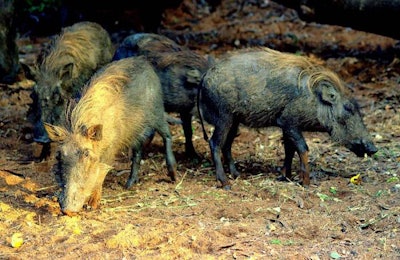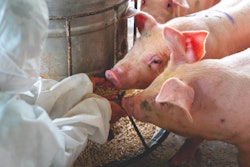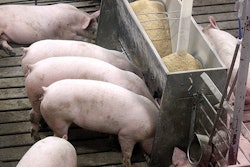
With ASF spreading among the country’s wild boar population, South Korean authorities are introducing new measures to protect the commercial pork industry.
Over the past week, South Korea’s agriculture ministry has reported that a further 21 wild boar found in the border area with North Korea tested positive for the African swine fever (ASF) virus, according to the official report to the World Organization for Animal Health.
As in previous cases, all these animals were found in the provinces of Gyeonggi and Gangwon. The majority of cases were from the counties of Yeoncheon in Gyeonggi, or Hwacheon in Gangwon. However, the first cases were also confirmed in Yanggu and Pocheon, which are located in Gyeonggi and Gangwon, respectively.
Concerned about the apparent spread of the infection, all automobiles will be banned from entering pig farms in the border area from the start of May. The aim of the measure is to prevent the infection spreading to domestic pigs, reports Yonhap. In addition, several unmanned drones will be used to disinfect the border area.
Now the number of wild boar testing positive for the ASF virus since September 2019 has reached 545, according to the same source. The most recent ASF outbreak on a farm was in October 2019. Up to now, more than 400,000 pigs have been culled in South Korea to prevent the spread of the disease.
New outbreak in China’s Sichuan province
China’s agriculture ministry has reported to the OIE a fourth outbreak of ASF in Sichuan province.
Last week, a vehicle was checked by the authorities on a highway in the Bazhong region. It was found to contain 106 pigs, two of which died. The remaining animals — which were being transported from another province without authorization — have been destroyed, according to the ministry’s report.
‘Significantly increased’ ASF risk in China
Now — as the pig sector begins to recover from the previous widespread outbreaks — is a time of significantly increased ASF risk, reported The Jakarta Post recently.
Yu Kangzheng, China’s deputy agriculture ministry said the risk of spreading the infection is rising as more pigs are transported around the country to restore depleted herds. Additionally, farmers are being attracted to the sector by the prospect of good profits, as well as government policies aimed at rebuilding the national pig herd.
ASF spreads to new areas of Papua New Guinea
After initial outbreaks of ASF in the Southern Highlands region, ASF is has spread to the neighboring provinces of Enga and Hela, reports Post Courier. While the government has banned all movements of pigs in the three affected provinces, pig farmers are calling for more information.
Village pig owners reporting unusual mortality in their animals say they have no information about the disease or how to prevent its spread.
ASF is progressively spreading in pigs in parts of the Micronesian nation just as the first cases of the novel coronavirus (COVID-19) have been confirmed in people.
First cases of ASF in Papua New Guinea were confirmed in March of this year, making it the 13th nation in the Asia-Pacific region to be affected by the disease.
Australia’s pig farmers on high alert
Because of the proximity of the ASF cases in Papua New Guinea, ABC reports that Australia’s pork sector is now on high alert for signs of the disease. Farmers are urged to increase their biosecurity measures.
The Australian industry contributes AUD5.2 billion (US$3.3 billion) to the national economy, according to the report. An outbreak of ASF could easily wipe AUD2 billion off that figure.
Authorities are particularly concerned about the high number of feral pigs — estimated to be up to 25 million — roaming across the country with the potential to spread any disease to the commercial pork sector.
View our continuing coverage of the global African swine fever situation.


















